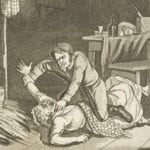 Crime
Crime  Crime
Crime  Technology
Technology 10 Hilariously Over-Engineered Solutions to Simple Problems
 Miscellaneous
Miscellaneous 10 Ironic News Stories Straight out of an Alanis Morissette Song
 Politics
Politics 10 Lesser-Known Far-Right Groups of the 21st Century
 History
History Ten Revealing Facts about Daily Domestic Life in the Old West
 Weird Stuff
Weird Stuff 10 Everyday Products Surprisingly Made by Inmates
 Movies and TV
Movies and TV 10 Actors Dragged out of Retirement for One Key Role
 Creepy
Creepy 10 Lesser-Known Shapeshifter Legends from Around the World
 Animals
Animals 10 Amazing Animal Tales from the Ancient World
 Gaming
Gaming 10 Game Characters Everyone Hated Playing
 Crime
Crime 10 Terrifying Serial Killers from Centuries Ago
 Technology
Technology 10 Hilariously Over-Engineered Solutions to Simple Problems
 Miscellaneous
Miscellaneous 10 Ironic News Stories Straight out of an Alanis Morissette Song
Who's Behind Listverse?

Jamie Frater
Head Editor
Jamie founded Listverse due to an insatiable desire to share fascinating, obscure, and bizarre facts. He has been a guest speaker on numerous national radio and television stations and is a five time published author.
More About Us Politics
Politics 10 Lesser-Known Far-Right Groups of the 21st Century
 History
History Ten Revealing Facts about Daily Domestic Life in the Old West
 Weird Stuff
Weird Stuff 10 Everyday Products Surprisingly Made by Inmates
 Movies and TV
Movies and TV 10 Actors Dragged out of Retirement for One Key Role
 Creepy
Creepy 10 Lesser-Known Shapeshifter Legends from Around the World
 Animals
Animals 10 Amazing Animal Tales from the Ancient World
 Gaming
Gaming 10 Game Characters Everyone Hated Playing
10 Holidays With Twisted, Dark, And Unusual Histories
With the holidays wrapping up here in the Western world, many of us still have our Christmas lights up, our bellies full, and plenty of other cheerful things hanging around to remind us of our recent celebrations. Holidays in this day and age are a great way for us to share, laugh, love, and make memories with our friends and loved ones.
But how often do we stop and consider the roots of our holidays and the events from which they were born? Most people with an Internet connection know that many modern holidays are a hodgepodge of ancient pagan practices which have been augmented or adopted in various forms by the surviving religions.
But beyond just ancient paganism, many holidays stem from historical events. Sometimes, those events are quite dark and not exactly the nice, cheery tales we’d expect such holidays to spring from. Here are 10 holidays with unusually dark and strange histories.
10 The Death Of St. Patrick
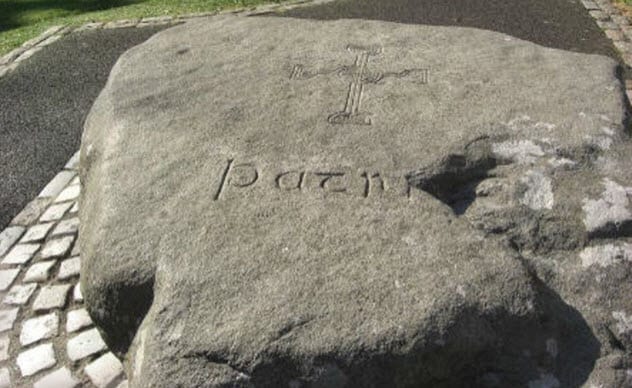
Most of us in the Western world who celebrate the holiday, especially if we’re not particularly religious or even armchair historians, think of St. Patrick’s Day as a fun festival marked by the consumption of copious amounts of beer. St. Patrick’s Day has always been a religious holiday, but Irish immigrants who came to the United States in search of a better life greatly popularized it as a secular holiday, solidifying it as a representation of Irish culture.
But the holiday didn’t have a happy-go-lucky beginning. It’s actually the celebration of the death of St. Patrick. His life was hard from the beginning. When the Romans occupied Great Britain in the fifth century, St. Patrick was just a 16-year-old boy who was captured and taken to Ireland from Britain as a slave.
Somehow, in 432, St. Patrick managed to escape slavery and become a force for Christianity by converting the then-pagan Irish to the religion and establishing monasteries and places of worship. He was said to have died on March 17, 493, which would have made him over 100 years old. However, historians generally agree that he actually died in 461, which is a bit more realistic.
Nonetheless, the fact remains that St. Patrick’s Day is a celebration of the day of his death. Even more dark and unusual than that are the events that ensued after his death.
The Battle for the Body of Saint Patrick took place when two rival factions fought over who had the proper rights to the corpse. However, things get a little mythological in the account in Annals of the Four Masters, the work that describes the battle.[1]
It concludes with a scene where the rival factions end up on a river to do glorious, bloody battle for the rights to the corpse of the beloved saint. Allegedly, the river rose up and flooded upon their arrival. Both sides walked away with what they believed to be the body of St. Patrick, and it was attributed to a divine miracle that the battle was stopped.
Odd beginnings for a holiday of green beer, fun, and leprechauns.
9 Good Friday
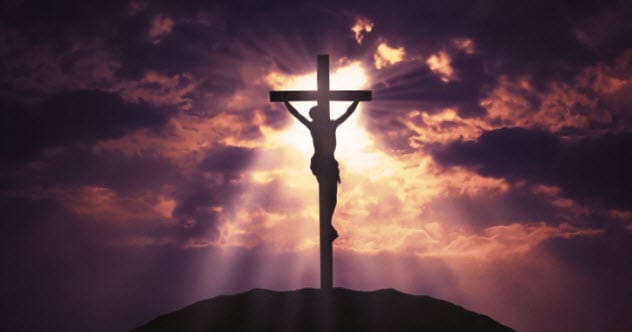
For a holiday with such a nice name as Good Friday, its historical origins are rather dark in nature. However, Good Friday came from the ancient Germanic culture and language and was long ago Karfreitag (“Sorrowful Friday”). Before the contemporary world got hold of it, the holiday was celebrated by fasting, by asking for forgiveness from sin, and by general sorrow-filled reflection on behalf of the practitioners.
If you think about it, this makes sense. Good Friday is a holiday that was born out of betrayal, greed, and execution. For most of its history, it wasn’t the wonderful holiday that we make it out to be, but rather the celebration of the death of Jesus Christ.
Traditionally, monks and devout religious people saw this as a day of observance and remembrance and of somber reflection—not just the prequel to Easter Sunday. Some people even hold services that last three hours in remembrance of the amount of time that Jesus was said to have suffered upon the cross.[2]
8 The Friday Of Sorrows
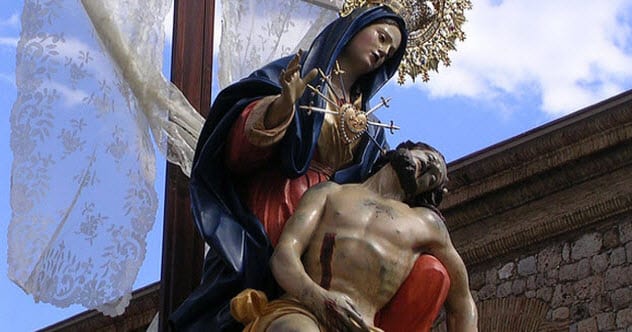
The lesser-known holiday of the Friday of Sorrows takes place on the Friday before Good Friday and dates back to the medieval times of Europe. It’s like Good Friday, only for the Virgin Mary, where worshipers and the devoutly religious celebrate the suffering of the Virgin Mary as she witnessed her son dying on the cross. This remembrance takes place mainly in predominantly Catholic countries rather than Protestant Christian ones.
Also known as the Feast of the Seven Sorrows of the Blessed Virgin Mary, this holiday was not only meant to remember the suffering that Mary experienced while Jesus was on the cross but also seven of the sorrows that took place over the course of Mary’s life.
From Mary receiving the prophecy of Simeon to desperately fleeing into Egypt after Jesus’s assumed birth, losing Jesus in Jerusalem as mentioned in Luke 2:43–49, and watching Jesus be executed, taken off the cross, and buried, the Feast of the Seven Sorrows is perfectly dark in the way that only a medieval holiday could be.[3]
7 The Night Of Broken Glass
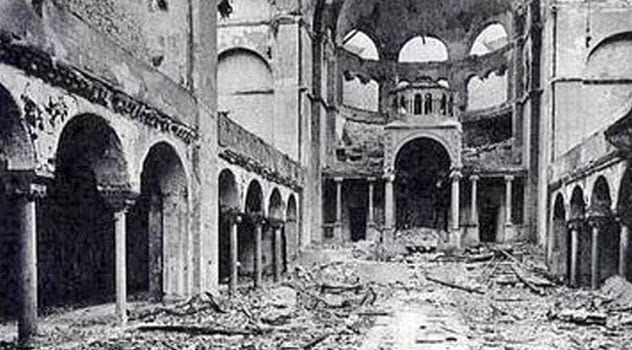
This is a dark holiday observed in Germany in remembrance of one of the most atrocious events of all time: the Holocaust. Kristallnacht, or Night of Broken Glass, refers to the acts that led to the events that would eventually transpire at Auschwitz concentration camp.
On the night of November 9, 1938, German Nazis committed a grievous massacre in the streets, killing Jewish people and destroying their property. In response to these events, the Nazi government said that their actions and senseless violence against the Jewish people were “perfectly understandable.”
The name of the holiday refers to the broken glass left in the streets in several countries after the events unfolded. The violence wasn’t limited to just Germany. It also took place in Austria and Czechoslovakia.
It all began on November 7, 1938, when a Nazi German official named Ernst vom Rath was shot in Paris by a Polish Jew who was 17 years old at the time. Ernst vom Rath died two days later after an extremely drummed-up propaganda assault by none other than the Nazi minister of propaganda himself, Joseph Goebbels. He had said that there was a massive conspiracy of Jews behind the assassination.[4]
Of course, the die-hard Nazi supporters ran with it, committing widespread violence against Jewish people on the night of Ernst vom Rath’s death, which was November 9, 1938. Germany now tries to keep this night burned into their memory with a holiday of remembrance for those who lost their lives on the Night of Broken Glass and all who subsequently died in the tragic events that followed.
That night marked the beginning of much of the anti-Jewish legislation that was railroaded through by the powerful Nazi Party, which legalized the Holocaust and the acts which led to it.
6 Samhain
 Samhain is a holiday celebrated by the ancient Celts as a part of their religion before they were subjugated by Roman rule and eventually turned to Christianity (with the help of St. Patrick, no doubt). The Celts were loose-knit tribes known by the Romans as the Gauls. They shared a similar language and culture.
Samhain is a holiday celebrated by the ancient Celts as a part of their religion before they were subjugated by Roman rule and eventually turned to Christianity (with the help of St. Patrick, no doubt). The Celts were loose-knit tribes known by the Romans as the Gauls. They shared a similar language and culture.
Samhain was the ancient Celtic festival of the dead. Celtic religion held that the spirits of the dead would have to wander the Earth and wait until the day of Samhain, which was November 1, to pass into the afterlife. It didn’t matter what time of year that the person died.
The Celts also believed that their gods were not only mischievous and caused trouble, but that they were also invisible—except on Samhain. During the celebration on October 31, the Celts would leave out burning candles to light the way for their dead so that they could see where they were going.
It should be noted that Samhain isn’t Halloween, though Halloween borrows a lot of Samhain’s traditions. Samhain is actually still practiced by pagans around the world, albeit in smaller numbers.[5]
In ancient times, it was believed that this period was a time when people could communicate with not only their dead friends and relatives but also the Dark Mother and the Dark Father, entities of supernatural power that the ancient Celts believed in.
Their religion was quite intricate, and this holiday is a time when people would communicate with their darker natures, the darker supernatural, and the dead.
5 Valentine’s Day
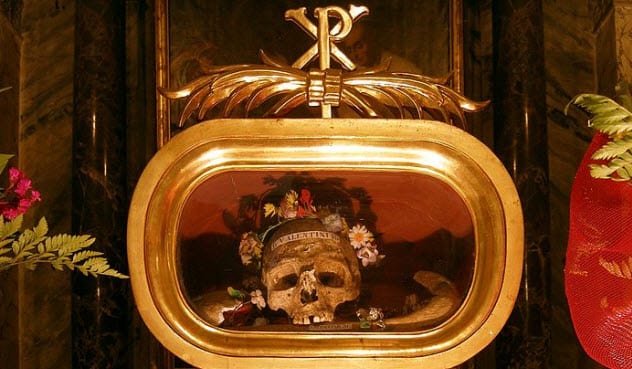
Today, the watered-down tradition of St. Valentine’s Day is represented most often by thoughtful cards, chocolates, and romantic love, even courtly love not unlike that of the Middle Ages. And long before the famed St. Valentine’s Day Massacre, the brutal Mafia execution of seven men conducted by Al Capone and his gang on February 14, 1929, there was another bloody day that actually spawned Valentine’s Day.
This was the martyrdom of St. Valentine. Yes, Valentine’s Day is the celebration of an execution.
The year was 269, and Claudius II was the emperor of mighty Rome. The growth of marriage and family life had caused a shortage of men willing to leave home and fight in foreign lands. Therefore, Claudius outlawed marriage entirely and anyone caught getting married or performing marriage rites would be condemned.[6]
But St. Valentine refused to stop performing marriages. He was punished severely for his “crimes” and was eventually tortured, beaten with clubs, and beheaded. Yes, you read that right—St. Valentine’s Day is the celebration of a saint from ancient Rome who was tortured, beheaded, and died on February 14, 269.
4 The Feast Of Corpus Christi
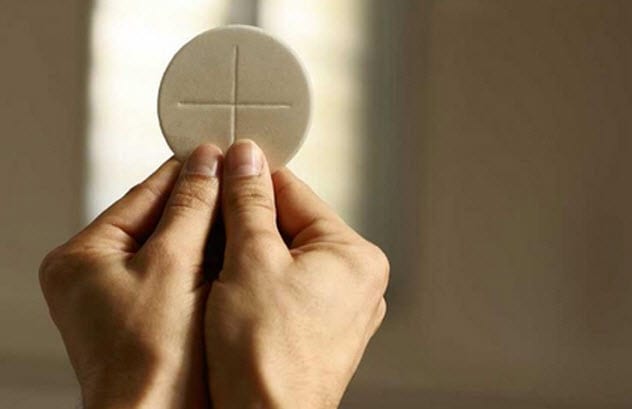
Corpus Christi could be regarded as a particularly strange holiday to those who aren’t Catholic and don’t believe in transubstantiation, the idea that food and wine can turn into the body and blood of Christ for the believer consuming them. The Feast of Corpus Christi is a whole day to drink blood and eat flesh for devout believers.
“Corpus Christi” translates to “the body of Christ” in Latin, so there’s no ambiguity that the idea of eating the flesh of Christ is involved.
Heavy symbolism characterizes this holiday, which began in 1246. With chalices and bread wafers everywhere, it’s an aesthetic experience as much as a spiritual one. For most non-Catholics, a holiday where one places bread into his mouth that actually turns into flesh might raise some eyebrows. But many Catholics all over the world celebrate this holiday annually and have done so for hundreds of years.[7]
3 Dia De Los Muertos
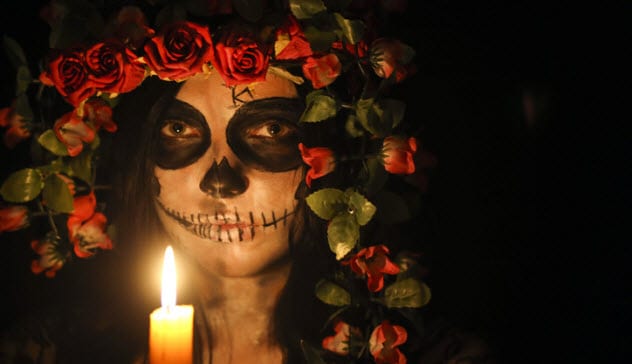
The reason we can’t appropriately say that Samhain was the forerunner of Halloween is that Samhain became what Catholics celebrate as All Saints’ Day on November 1. All Saints’ Day is basically the Catholic version of Samhain, complete with celebrating those who’ve gone to Heaven and the saints taking the place of the Celtic gods of old.
Dia de los Muertos is a Mexican holiday which celebrates the personification of death itself and has long roots in both European and Aztec cultures. With Spanish conquests of the Aztecs, Dia de los Muertos was moved to line up with the Catholic All Saints’ Day. The two fused into one holiday when practitioners would pay respects to their dead, which was in the origins of both holidays.
Dia de los Muertos makes no claims to be anything other than a dark holiday that’s all about death, with the name itself translating to “Day of the Dead” in Spanish. However, there are some notable differences between All Saints’ Day and Dia de los Muertos.
Santa Muerte (aka Our Lady of Holy Death), the major figure celebrated on Dia de los Muertos, is the saint of death. Dia de los Muertos takes Samhain and All Saints’ Day one step further by actually making death itself a saint. The Catholic Church rejects this saint and warns against the holiday as being dark and even satanic.[8]
2 Passover
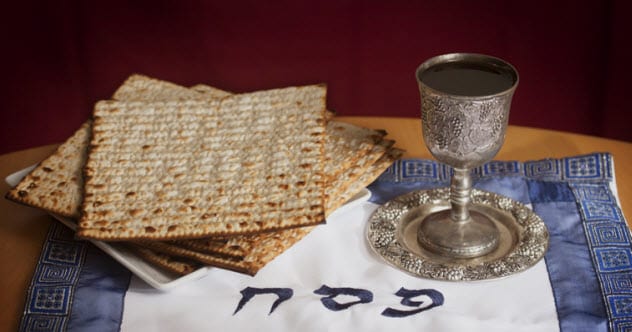
Passover is a Jewish holiday in which practitioners remove all leavened bread from their homes and reenact what life must have been like when the Jews fled Egypt in the Bible. For many, it’s a celebration of the liberation of the Jews from an oppressive Egypt and the foundation of the homeland for the Israelites. The holiday begins on the 15th and runs through the 21st in March or April.
But what’s the real story behind what they were fleeing? Well, it all starts with the slaughter of the firstborn. Exodus 11:5 says:
“Every firstborn son in Egypt will die, from the firstborn son of Pharaoh, who sits on the throne, to the firstborn son of the female slave, who is at her hand mill, and all the firstborn of the cattle as well.”[9]
According to the Bible, Jehovah killed every firstborn Egyptian child in the country to prove his point. And it gets worse. This was actually a reprisal because the pharaoh of Egypt had killed all the newborns and infants of the ancient Hebrews to prove his point. Then the 10 plagues of Egypt happened, with everything from raining frogs to bubonic plagues hitting Egypt hard according to the Bible.
This is what the holiday actually celebrates—a religious and military victory over another nation that, if you take it as gospel, is quite barbaric in nature.
1 Christmas

Christmas is both unusual and dark in its history for a few reasons. First, Christmas is an extremely modern holiday. Historically, Christians don’t celebrate birthdays as it has long been viewed as pagan to celebrate an individual’s birth on Earth rather than his dying to go to Heaven in accordance with Christian beliefs.
This is why saints are remembered for their (often macabre) deaths instead of their births because the moment of eternal judgment in Christianity is more important than life. This made Christmas a mockery for a long time, with writers advocating strongly against it. Traditionally, in Christianity, the moment of death was your actual and true “birthday” in the kingdom of God.
The second and more macabre part of the story comes with a jolly old fat guy, Saint Nicholas or Santa Claus. Thanks to Coca-Cola ads stemming from the 1930s, we now see him plastered everywhere as a fat guy with a wispy white beard, a red onesie with white fur trim, and a big grin on his face at all times.
But this isn’t the real Saint Nick, so who was he? Well, the answer is that we don’t really know because we have no surviving historical documentation. He was the bishop of Myra in the fourth century. But aside from that, we know next to nothing about the man.
However, we do have one major artifact: his dead body. Yes, the only thing we know for sure about Saint Nicholas is that we have his actual dead corpse.
Allegedly, the real Saint Nicholas wasn’t very jolly. He was present for the very first Council of Nicaea in 325. There, he punched a guy in the face whom he thought was heretical.[10]
After he died in 343, his remains lay buried until Italian sailors stole his corpse and moved it in 1087 from Myra to a city in Italy called Bari. Before this, the original Santa Claus was a nobody. But the theft of his remains made his popularity surge in Europe, which is how he became a figure that’s still present in our cultures today.
To put this little piece of history to the test, researchers analyzed a fragment of Santa’s hip bone. Sure enough, it dated all the way back to the fourth century, confirming that it probably belonged to the original Santa Claus.
I love to write about dark stuff, horror-themed material, the unusual, murder, and death. Here’s a twisted little piece about the dark histories of holidays. This isn’t your usual holiday list, and Christmas is definitely the bizarre kicker. I haven’t seen it discussed like this anywhere.
Read more about twisted, dark holidays on 10 Most Shockingly Barbaric Holidays In History and Top 10 Holidays that will Kill You.





